 Venice was the wealthiest city and the principal port in Europe during the fifteenth and sixteenth centuries, and Florence was the leading artistic center of the time. Out of these city-states poured painters, architects, and sculptors, many of who began their study of art with the study of the craft of goldsmithing. The design skills learned through technical artistry served as a kind of apprenticeship that led them on to other more celebrated pursuits. It is from their paintings that we learn about the styles that were popular at the time and because they had sometimes made the jewelry they depicted, or were at least familiar with the way it was made, we have a very accurate record of what jewelry looked like in the Renaissance.
Venice was the wealthiest city and the principal port in Europe during the fifteenth and sixteenth centuries, and Florence was the leading artistic center of the time. Out of these city-states poured painters, architects, and sculptors, many of who began their study of art with the study of the craft of goldsmithing. The design skills learned through technical artistry served as a kind of apprenticeship that led them on to other more celebrated pursuits. It is from their paintings that we learn about the styles that were popular at the time and because they had sometimes made the jewelry they depicted, or were at least familiar with the way it was made, we have a very accurate record of what jewelry looked like in the Renaissance.
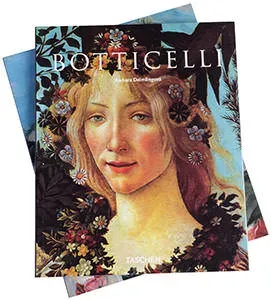 It is in the early Renaissance that we begin to have proper names to whom to attribute the jewelry we find: Ghiberti, Boticelli, Maso di Finiguerra, Antonio Pollaiuolo. Part of the reason for this is that ecclesiastical influence in the Renaissance was less strong than it had been in the Middle Ages. Though papal patronage and strong religious faith was still a strong influence on what was made, a revival of interest in classical sources and scientific discovery led artists to more faithfully copy objects from real life. Sculptures, paintings, and the shallow relief carved into jewelry and architecture were full of accurate renditions of animate forms portrayed in linear perspective. Artists were competitive about their skills in this regard, as well as increasingly engaged with the concept of humanism, and one consequence of these developments is that individuals began to be famous for their skills.
It is in the early Renaissance that we begin to have proper names to whom to attribute the jewelry we find: Ghiberti, Boticelli, Maso di Finiguerra, Antonio Pollaiuolo. Part of the reason for this is that ecclesiastical influence in the Renaissance was less strong than it had been in the Middle Ages. Though papal patronage and strong religious faith was still a strong influence on what was made, a revival of interest in classical sources and scientific discovery led artists to more faithfully copy objects from real life. Sculptures, paintings, and the shallow relief carved into jewelry and architecture were full of accurate renditions of animate forms portrayed in linear perspective. Artists were competitive about their skills in this regard, as well as increasingly engaged with the concept of humanism, and one consequence of these developments is that individuals began to be famous for their skills.
 Classicism took great hold within jewelry, and the rational, orderly approach to many fields at the time became prevalent in goldsmithing. Jewelry was uncomplicated in design, though worn in abundance. Stones themselves were highlighted for their quality. In the Middle Ages, most stones were cabochon: rounded, polished, but not at all faceted. As a result of trade in the fourteenth century, new sources of stones appeared and new cuts as well. Jewels were faceted, table cut, rounded, and occasionally, for the first time, falsified! Indeed imitation gems and pearls made their first appearance in the Renaissance and laws began to be instituted to protect against fake jewels.
Classicism took great hold within jewelry, and the rational, orderly approach to many fields at the time became prevalent in goldsmithing. Jewelry was uncomplicated in design, though worn in abundance. Stones themselves were highlighted for their quality. In the Middle Ages, most stones were cabochon: rounded, polished, but not at all faceted. As a result of trade in the fourteenth century, new sources of stones appeared and new cuts as well. Jewels were faceted, table cut, rounded, and occasionally, for the first time, falsified! Indeed imitation gems and pearls made their first appearance in the Renaissance and laws began to be instituted to protect against fake jewels.
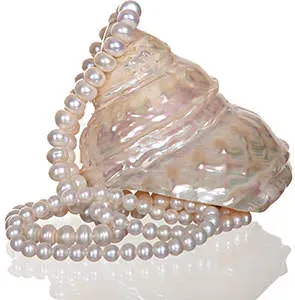 In the Middle Ages, much jewelry was actually a part of clothing: collars and mufflers were adorned with gems. One of the reasons that jewels became an art separate from that of clothing design was that the concept of the fad really took hold in the Renaissance. The Northern Italian economy depended on the importation and production of fine fabrics, and many of the noblemen who had made their fortune in this way gained social recognition by frequently changing their style of dress. Clothing went out of fashion faster than it would have worn out, and it would have been impractical to waste jewels in that kind of stylistic equation. So where a wealthy woman in Medieval Times would have worn her jewels embroidered high up on sumptuous fabrics around her neck, a woman in early Renaissance Italy would have worn a gown with a low neck, exposing her collarbones and creating the ground for the wearing of simple necklaces. Men wore neck-chains from the fifteenth to the seventeenth century, most of which were made of pure gold and were worn to excess. These chains were made of plaited wire or rounded links of various design and sometimes were large enough to circle both neck and shoulders several times. Women favored strings of precious stones, ropes of pearls or smaller necklets worn around the throat. Pendants were occasionally scented, rendered so that they might actually bear a ball of musk or some other pleasant-smelling material within a charming cage.
In the Middle Ages, much jewelry was actually a part of clothing: collars and mufflers were adorned with gems. One of the reasons that jewels became an art separate from that of clothing design was that the concept of the fad really took hold in the Renaissance. The Northern Italian economy depended on the importation and production of fine fabrics, and many of the noblemen who had made their fortune in this way gained social recognition by frequently changing their style of dress. Clothing went out of fashion faster than it would have worn out, and it would have been impractical to waste jewels in that kind of stylistic equation. So where a wealthy woman in Medieval Times would have worn her jewels embroidered high up on sumptuous fabrics around her neck, a woman in early Renaissance Italy would have worn a gown with a low neck, exposing her collarbones and creating the ground for the wearing of simple necklaces. Men wore neck-chains from the fifteenth to the seventeenth century, most of which were made of pure gold and were worn to excess. These chains were made of plaited wire or rounded links of various design and sometimes were large enough to circle both neck and shoulders several times. Women favored strings of precious stones, ropes of pearls or smaller necklets worn around the throat. Pendants were occasionally scented, rendered so that they might actually bear a ball of musk or some other pleasant-smelling material within a charming cage.
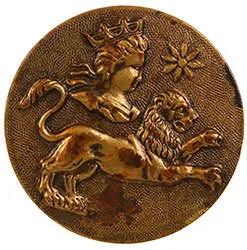 Despite the changing of fads, it was not the desire to display one's wealth that seems to have influenced early Renaissance jewelry; the gems and metals that were used were not always the most actually valuable. Rather, the desire for harmony and perfection of execution influenced styles. Every piece of jewelry was finished on its back and front. Many pieces involve realistic depictions of subjects carved into their gold settings, including human figures, real and imaginary animals, stories from classical mythology and occasionally sacred allegories. This is true of ensigns, which originated as identificatory badges worn on the hat, but which became entirely articles of adornment, bearing representations first of religious scenes and then of secular and even humorous subjects as well.
Despite the changing of fads, it was not the desire to display one's wealth that seems to have influenced early Renaissance jewelry; the gems and metals that were used were not always the most actually valuable. Rather, the desire for harmony and perfection of execution influenced styles. Every piece of jewelry was finished on its back and front. Many pieces involve realistic depictions of subjects carved into their gold settings, including human figures, real and imaginary animals, stories from classical mythology and occasionally sacred allegories. This is true of ensigns, which originated as identificatory badges worn on the hat, but which became entirely articles of adornment, bearing representations first of religious scenes and then of secular and even humorous subjects as well.
 Ensigns replaced the brooch during the late Middle Ages. Brooches with clusters of gems around one central larger gems faded from fashion and were replaced by brooches that functioned like plaques: carved depictions framed by gemstones. Some brooches were shaped into hearts, and stones themselves began to be cut into heart shapes. These were likely given between lovers, as jewels became frequent wedding gifts. As the Middle Ages waned, the mode of wearing garments changed, and the cotehardi, a tight fitting bodice, was replaced by the mantle, which displaced the brooch and the brooch form began to be worn on the hat as an ensign.
Ensigns replaced the brooch during the late Middle Ages. Brooches with clusters of gems around one central larger gems faded from fashion and were replaced by brooches that functioned like plaques: carved depictions framed by gemstones. Some brooches were shaped into hearts, and stones themselves began to be cut into heart shapes. These were likely given between lovers, as jewels became frequent wedding gifts. As the Middle Ages waned, the mode of wearing garments changed, and the cotehardi, a tight fitting bodice, was replaced by the mantle, which displaced the brooch and the brooch form began to be worn on the hat as an ensign.
 Brides began to receive betrothal rings in the Renaissance and men seem at times to have worn engagement rings on cords around their necks. Rings were worn in great abundance; sometimes women wore up to three rings on one finger, even over the knuckles or through slits in gloves. Most rings were set with only one stone, which was frequently a
Brides began to receive betrothal rings in the Renaissance and men seem at times to have worn engagement rings on cords around their necks. Rings were worn in great abundance; sometimes women wore up to three rings on one finger, even over the knuckles or through slits in gloves. Most rings were set with only one stone, which was frequently a ![]() ruby. Rings were also sometimes given by religious leaders to pilgrims. Such rings were not usually valuable, and were made of copper or bronze set with semiprecious stones, but they were carved with symbols relevant to their function and were sometimes rather large.
ruby. Rings were also sometimes given by religious leaders to pilgrims. Such rings were not usually valuable, and were made of copper or bronze set with semiprecious stones, but they were carved with symbols relevant to their function and were sometimes rather large.
 Renaissance goldsmiths practiced all known techniques: hammering, chasing, casting and enameling. They practiced them all exquisitely, taking lessons from Gothic and ancient traditions, taking advantage of the wealth and capriciousness of noble clients to make pieces with astonishing variety. Color was a major part of Renaissance jewelry. Bright colored gems were placed side by side in delicately worked gold often enriched with many colored enamels. Sapphires, rubies and emeralds were popular choices for their hues, and diamonds were used only as contrast. A typical process of setting stones was to rub the upper edges of a box-shaped collet over the setting edge of the stone, a method that set the color of the stone off of the gold nicely and which is somewhat replicated in modern times by flush or bezel settings. The frame of a Renaissance setting was irregular, however, because of the particular manner in which the goldsmith beat the gold up around the gem.
Renaissance goldsmiths practiced all known techniques: hammering, chasing, casting and enameling. They practiced them all exquisitely, taking lessons from Gothic and ancient traditions, taking advantage of the wealth and capriciousness of noble clients to make pieces with astonishing variety. Color was a major part of Renaissance jewelry. Bright colored gems were placed side by side in delicately worked gold often enriched with many colored enamels. Sapphires, rubies and emeralds were popular choices for their hues, and diamonds were used only as contrast. A typical process of setting stones was to rub the upper edges of a box-shaped collet over the setting edge of the stone, a method that set the color of the stone off of the gold nicely and which is somewhat replicated in modern times by flush or bezel settings. The frame of a Renaissance setting was irregular, however, because of the particular manner in which the goldsmith beat the gold up around the gem.
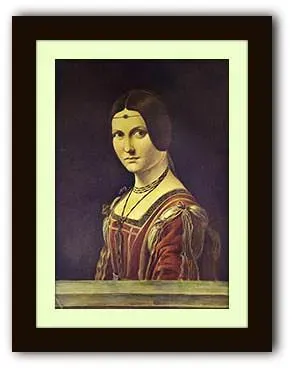 The Renaissance evolved from the fourteenth through the sixteenth centuries, and styles changed dramatically during these three hundred years. From Piero della Francesca's paintings we glean many examples of one of the most popular styles of the fifteenth century: a head ornament that emphasizes the forehead by placing a single jewel at the top of the brow set into a ribbon or galloon. These head ornaments were known as ferronnieres. By the sixteenth century, these head ornaments disappeared and instead coiffures were adorned with ropes of pearls and sprinklings of jewels. Neck adornments evolved similarly: in the fifteenth century, we see single gems or small clusters hanging on a thread, but by the sixteenth century, the thread became a solid chain, and the light necklace became quite heavy.
The Renaissance evolved from the fourteenth through the sixteenth centuries, and styles changed dramatically during these three hundred years. From Piero della Francesca's paintings we glean many examples of one of the most popular styles of the fifteenth century: a head ornament that emphasizes the forehead by placing a single jewel at the top of the brow set into a ribbon or galloon. These head ornaments were known as ferronnieres. By the sixteenth century, these head ornaments disappeared and instead coiffures were adorned with ropes of pearls and sprinklings of jewels. Neck adornments evolved similarly: in the fifteenth century, we see single gems or small clusters hanging on a thread, but by the sixteenth century, the thread became a solid chain, and the light necklace became quite heavy.
 Women wore hairpins, often called bodkins, that were richly decorated with stones. Queen Elizabeth received several such ornaments as New Year's gifts: "A bodkyn of golde, garnished at the ende with four smale diamondes and a smale rubye, with a crown of ophales, and a very smale perle pendant peare fashone, a bodkin of golde, with a flower thearat, garnished with smale rubyes and ophals on one side, a bodkinne of silver, with a little ostridg of gold, pendant, enammuled, and two waspes of golde lose enamuled."
Women wore hairpins, often called bodkins, that were richly decorated with stones. Queen Elizabeth received several such ornaments as New Year's gifts: "A bodkyn of golde, garnished at the ende with four smale diamondes and a smale rubye, with a crown of ophales, and a very smale perle pendant peare fashone, a bodkin of golde, with a flower thearat, garnished with smale rubyes and ophals on one side, a bodkinne of silver, with a little ostridg of gold, pendant, enammuled, and two waspes of golde lose enamuled."
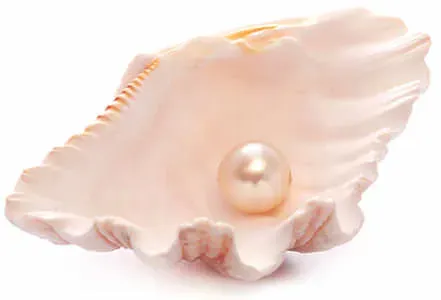 Women also began to wear earrings in the Renaissance. In the Middle Ages, women wore their hair over their ears, which meant that they did not wear earrings, but by the sixteenth century, Italian paintings show that some women did sport this form of adornment. One example is a set of elaborate earrings rendered in an openwork scroll pattern with three pendant pearls, measuring more than two and a half inches in length. A painting from sixteenth century Italy shows an ear pierced twice, each of which piercing is strung with a separate ring that is bound to the same pendant of two pearls mounted in gold, from which pendant three pearls hang below. This is an example of the sort of wonderful ostentation that the Renaissance begat in terms of personal adornment, but was by no means a common style. Men wore earrings in the Renaissance as well: King Charles I hung a large pearl from his left ear, which he wore all the way to the scaffold from which he was hung, at which point he took the pearl from his ear and gifted it to a faithful follower. The King's pearl was five-eighths of an inch long, mounted to a gold top, fitted with a hook to pass through the lobe.
Women also began to wear earrings in the Renaissance. In the Middle Ages, women wore their hair over their ears, which meant that they did not wear earrings, but by the sixteenth century, Italian paintings show that some women did sport this form of adornment. One example is a set of elaborate earrings rendered in an openwork scroll pattern with three pendant pearls, measuring more than two and a half inches in length. A painting from sixteenth century Italy shows an ear pierced twice, each of which piercing is strung with a separate ring that is bound to the same pendant of two pearls mounted in gold, from which pendant three pearls hang below. This is an example of the sort of wonderful ostentation that the Renaissance begat in terms of personal adornment, but was by no means a common style. Men wore earrings in the Renaissance as well: King Charles I hung a large pearl from his left ear, which he wore all the way to the scaffold from which he was hung, at which point he took the pearl from his ear and gifted it to a faithful follower. The King's pearl was five-eighths of an inch long, mounted to a gold top, fitted with a hook to pass through the lobe.
 Bracelets were one of the least popular decorations during the Renaissance, and that is because garments worn at the time were still in general long-sleeved. Those bracelets that have been found from the period consist of beads of
Bracelets were one of the least popular decorations during the Renaissance, and that is because garments worn at the time were still in general long-sleeved. Those bracelets that have been found from the period consist of beads of ![]() amber or black stone separated by balls of gold. Sometimes strings of carved cameo portraits were made into bracelets. Poetry from the period suggests that bracelets were sometimes given as tokens of affection, made from everything from a lover's hair to the more conventional band of gemstones.
amber or black stone separated by balls of gold. Sometimes strings of carved cameo portraits were made into bracelets. Poetry from the period suggests that bracelets were sometimes given as tokens of affection, made from everything from a lover's hair to the more conventional band of gemstones.
 The Renaissance was a time during which all the countries of Europe engaged in much geographical exploration, and the countries traded styles of fashion and jewelry as much as other products. Germans, for example, studied in the great Italian ateliers, and artists such as Albert Durer were greatly influenced by such teachings. Traveling north from Italy in the early Renaissance, classicism became less and less important, and styles became more and more mixed, including straps, ribbons, cartouches, and elaborate details not popular in Italy until the Baroque period.
The Renaissance was a time during which all the countries of Europe engaged in much geographical exploration, and the countries traded styles of fashion and jewelry as much as other products. Germans, for example, studied in the great Italian ateliers, and artists such as Albert Durer were greatly influenced by such teachings. Traveling north from Italy in the early Renaissance, classicism became less and less important, and styles became more and more mixed, including straps, ribbons, cartouches, and elaborate details not popular in Italy until the Baroque period.